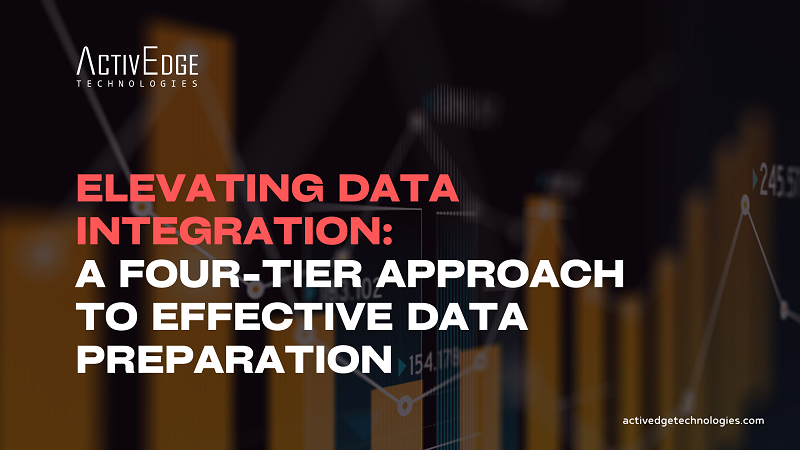Elevating Data Integration: A Four-Tier Approach to Effective Data Preparation
In today’s data-driven landscape, the integration of raw source data into usable business objects is a pivotal step in ensuring that organizations can make informed decisions and maximize the value of their data assets. To achieve these goals, a well-structured approach to data preparation is essential. In this post, we’ll introduce the four tiers of data preparation, each designed to streamline the transformation of raw data integration into actionable insights.
Tier 1: Data Cleansing
When dealing with raw source data, it’s not uncommon to encounter duplicate records, inconsistencies in formatting or context, or null values where there shouldn’t be. To ensure that data consumers have a clean, consistent dataset, these issues should be addressed in the data preparation model with a clear set of metadata describing the level of sanitation. However, there may also be business needs for analyzing unsanitized data, such as source system cleansing or data entry analytics. In such cases, it is important to expose these as distinct, clearly labeled datasets.
ALSO READ: Data Management Predictions for 2024: Five Trends
Tier 2: Data Integration
Data integration is where the magic happens. In this tier, the goal is to establish a view of data assets, transforming the data for easy consumption. Data modeled for efficient storage and retrieval by the operational system gets united and transformed into valuable corporate data assets, usually with more meaningful business identifiers and context. By representing normalized data in comprehensive, user-friendly business views, data becomes more accessible to a wider range of consumers. This not only reduces the potential for human error but also saves precious time for users who would otherwise need to first orient themselves with the data to extract relevant business insights.
Tier 3: Data Aggregation
While self-service data consumption models often enable users to define their own aggregations, many organizations can anticipate common consumption patterns. Likewise, data models built to support specific reporting or application layer requirements should almost always have clear consumption pattern requirements. By creating pre-aggregated views, the data service layer becomes more descriptive and intuitive. Additionally, when combined with Associations for drill-down data exploration, self-service users can access meaningful entry points into datasets (discovering increasingly granular details as their specific questions demand) and application developers can leverage predefined data links to provide the same functionality without requiring in-depth familiarity with foreign relationships. This approach empowers business users to uncover insights effortlessly and can drastically reduce development time and maintenance overhead for application developers.
RECOMMENDED: Navigating the Nigerian Data Protection Act: How Data Management Principles Lead to Compliance
Tier 4: Data Augmentation
Data augmentation is the final tier, where we enrich data objects with critical metadata. This metadata includes information about the data’s intended purpose, references to enterprise data dictionaries, access request methods, and social aspects like hierarchical categorization, tagging, and property management. By providing this context and supporting data assets with human-readable information, both business users and application developers can avoid misinterpretation and misuse of data. Establishing a robust mechanism for enriching and refining datasets for various types of users ensures that all final data consumers have clear, trusted, and accurate insights into the data they have access to.
READ: Data Management Predictions for 2024: Five Trends
In summary, the four tiers of data preparation form a comprehensive strategy for transforming raw source data into valuable business objects. By following these best practices, organizations can improve data quality, accessibility, and relevance, making data-driven decision-making more efficient and reliable.
Written by:
Keath Lewin
Technology Advocate, Customer Success at Denodo
What’s next: Gain real-time insights from your data;
begin your digital transformation today! REQUEST MEETING

